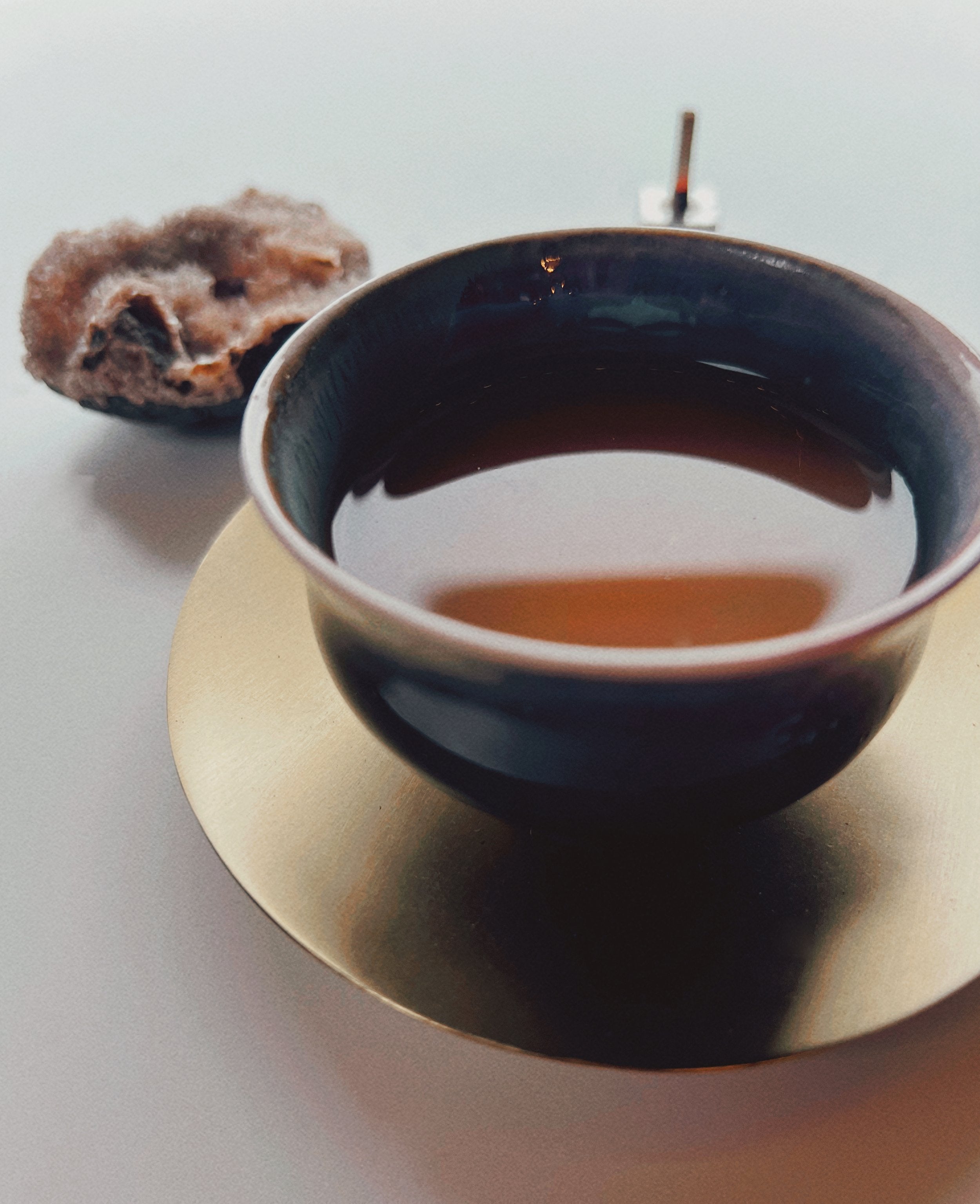The influence of plants, and the power of ritual—
It’s January, a New Year! And, the time of the year we inhabitants of the Northern Hemisphere engage in rituals of reassessment. “What is working well in our life?” We ask. “What isn’t?” We are collectively urged to pause and assess our habits: which of them do we definitely need to break? What new habits have we been promising ourselves we’ll take up (and stick with) in the new year?
Cosmologically, this makes perfect sense, since the energy of Capricorn is precisely tuned to endings and beginnings—coming in at the end of December to help us wrap up the year, and lead us on into January. This zodiac sign vibes with energies of refinement, focus, and renewed energy, which naturally compel us to reflect upon the direction our current life path is taking us, and to assess whether we wish to continue on, or alter course. Capricorn’s unhesitating determination helps us efficiently identify obstacles to our happiness, then clear them away to manifest the life we most desire.
Then, come mid-January, we spin into the sign of Aquarius, whose energy will ask us to evaluate the way we use our energy for the common good, in a way that raises collective consciousness.
The stars are profound and relentless coxswains.
It’s likely that you’re familiar with the well-known maxim, “You are what you eat.” If we follow that line of logic it leads us directly to a similarly insightful truism: We are what we (regularly) do. Just as our bodies are composed by the constituents of the particular kinds of food we ingest each day, so too are we defined as people by the habits and actions we regularly engage in from day to day, week to week, year to year.
As such, it becomes that much more clear how important it is that we reassess our daily habits on a regular basis; but, more than that even. Because a habit, regardless of how good or healthy, is still by definition an action performed so often that it has become ingrained:—becoming, in other words, a mindless action. And while it’s true that human beings are creatures of habit, what makes us distinctly human is our indomitable insistence on uncovering, (re)discovering, and creating deeper purpose and meaning in our lives.
Ritual is one of the most important tools we turn to in order to create experiences with greater purpose, meaning, and comfort. Rituals can increase our sense of steadiness or control over the constant movement and change of the world around us. Some people engage in age-old rituals associated with a faith tradition, for example, because these rituals can collapse the distance between an ancient past and the present, helping to draw an individual into a sense of communion with all who share and have ever shared that ritual together. In this way, the performance of a ritual can be like dropping into an eternal moment where all are one, and where we can rest in the knowledge that we exist in an unbroken wholeness.
Rituals can feel like an anchor; or a taproot. They can provide us with critical context that helps us meaningfully translate our daily experiences. And they can feel like a still center within a ceaselessly rotating spiral of time—a point of rooted location—timeless, connected, reassuring.
Rituals are the opposite of habits.
In The Art of Ritual, Renee Beck writes that the purpose of ritual is to increase balance, strength, energy, comfort, and connection within ourselves, with one another, with the world, and with the subtle but powerful rhythms and energies of the cosmos and the spiritual realm. By its very definition, ritual requires mindfulness. And mindfulness produces clearer intention, which is fundamental to the successful manifestation of our most cherished dreams and desires.
Given our natural inclinations to create and keep rituals that help lead us to more centered and fulfilling lives, it is worth noting the power that a daily tea ritual alone can offer.
For centuries, in other parts of the world, the tea plant has occupied a place at the heart of culture, and is a powerful vehicle for the cultivation of mindfulness, longevity, and inner peace. In China and Japan, for instance, tea-drinking began long ago as a wellness practice (tea as medicine), but slowly transformed via ritual into one of the East’s most cherished and important rituals, entering the ennobled realms of Poetry, Philosophy, and even Religion. Tea became a way of life—or a life perspective that helped make sense of the relationship between human beings and the natural world. In short, the discovery and mindful daily consumption of the Camellia sinensis plant helped usher in a heightened state of being and knowing in the East—via the ritual of steeping, ingesting, tasting, and listening to the subtleties of this particular plant. It is not hyperbole to say that tea was, has been, and still is responsible for altering the development of whole cultures.
The energy and personality of tea—Camellia sinensis—can feel something like morning low tide, a slow drawing back into the self, a quiet revelation of what lies beneath a restless, quickly moving, performative surface; or, a gentle accumulation of vibrancy that builds, then crests, and pours steadily outward in a measurable way. Tea helps us identify and maintain boundaries. It helps us to focus all forms of personal energy, increasing the potency and efficacy of these energies. And, if we pay close attention, the tea plant will teach us how to experience and understand essences. Its personality is that of the Poet, and when we ingest it we are very likely to succumb to its contemplative, imaginative influence.
In the West, it is a different plant that has held enormous sway upon the development of culture—the coffee plant. Coffee’s energy is best described as excitation (Pendell), and its personality that of the Politician. Coffee provokes intellectual restlessness and encourages drivenness. Where tea might draw our attention to slower, more minute observations about our experience of a moment or a place—such as the particular way a thin ray of light fractures into a hatched pattern of light and shadow across the floor—coffee, conversely, has a way of tunneling our attention to the finish line of a goal quickly. Its energy often ignites our desire for competition, and stokes the pleasure we feel in completing a task.
The coffee plant has an energy of urgency that encourages us to push beyond our physical limits, unheedful of what our bodies may need or be trying to communicate to us. Western culture has created daily rituals of coffee drinking, and these rituals are performed with the intention to stimulate, excite, and produce.
What kinds of plants we “commune” with on a daily basis, or make part of our daily rituals does have measurable impact on the development of who we are as individuals, on the development of communities, and upon the development of our culture more broadly.
Every plant has its own energy, its own presence, personality, and wisdom. This year, I will be spending more time discussing ritual, and the presence and personality of different plants that play key roles in some of our most popular tea blends. My hope is that my sharing inspires you to develop or deepen or keep your own daily tea rituals—and that through these rituals, the wisdom of the plants become that much more accessible, inspirational, and healing.




